Table of Contents
ToggleWelcome to the Pink Princess Philodendron guide! If you love houseplants with colorful leaves, you will enjoy this. The Pink Princess Philodendron has pretty pink and green leaves. It is a favorite for many plant lovers.
This guide gives you all the basics about this plant. We will talk about where it comes from, what makes it special, and how to care for it. Whether you are an expert or just starting, we have tips to help your Pink Princess grow well.
You will learn the best light, water, and soil for this plant. We will also show you how to grow new plants from cuttings and how to fix common problems. Plus, we will share where to buy one and what to look for.
Let’s start this plant journey together and add some pink to your home!
Understanding the Pink Princess Philodendron
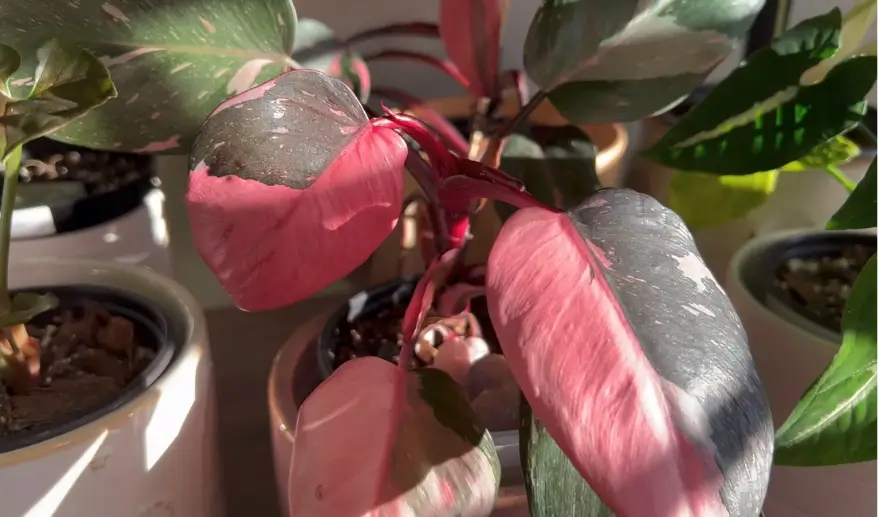
Origin and History
Have you heard about the Pink Princess Philodendron? This amazing houseplant has pink and green leaves. It comes from the rainforests of South America, mostly in Colombia. It likes warm and wet places, just like its natural home.
The story of the Pink Princess is interesting. It first appeared in the 1970s. Smart plant breeders created it by mixing different plants. This gave the leaves their unique pink and green color. The pink parts are because some cells don’t have chlorophyll, which makes them pink instead of green.
For a long time, the Pink Princess was a secret among plant lovers. But in 2019, things changed. Because of its beauty and social media sites like Instagram, it became very popular. People loved its bright pink color and the challenge of keeping it.
Making a Pink Princess is not easy. It involves mixing two different philodendron plants to get those special traits. It’s a careful job to choose the right plants for the best color and growth. What’s cool is that each Pink Princess has its own pattern, making each one special.
Unique Characteristics and Appearance
The Pink Princess Philodendron is special because of its leaves. Each leaf has a mix of pink and green, making it stand out. The pink parts can be small spots or large areas. The pattern can change as new leaves grow, showing different pink designs.
But it’s not just about the colors. The leaves are heart-shaped and shiny, which makes them even more attractive. The plant’s stems are often reddish-pink, matching the leaves nicely.
When you grow a Pink Princess Philodendron indoors, it can reach 2 to 3 feet tall. This makes it a great choice for any room. Its vines can be trained to climb a support, like a moss pole or trellis, adding height to your plant collection.
Variegation: What It Is and Why It Matters?
Variegation means the different colors you see on plant leaves. This happens because of changes in the plant’s genes that affect chlorophyll. Chlorophyll makes leaves green. For the Pink Princess Philodendron, this variegation shows up as pink and green spots on the leaves. The pink parts don’t have chlorophyll, so they look pink instead of green. Isn’t that cool?
This variegation is both good and tricky. It makes the Pink Princess Philodendron pretty, but it also means the plant isn’t as strong at making food as plants that are all green. Because of this, you need to care for it a little more. You’ll need to give it the right amount of light, water it well, and use good soil to keep it healthy.
Keeping the pink and green colors is very important. If the plant doesn’t get enough light, it might make more green leaves. Green leaves are better at making food and help the plant grow. But this can cause the plant to lose its pink color. Too much sunlight can also burn the pink parts, hurting the plant.
The patterns of variegation can change as the plant grows and depending on its health. Younger plants often have more pink, while older plants might show different patterns. Cutting the plant and taking good care of it can help manage these changes.
In short, the Pink Princess Philodendron is a unique and beautiful plant. Understanding where it comes from, loving its special look, and knowing why variegation matters are key to taking good care of this plant.
Care Requirements for Pink Princess Philodendron
Light Requirements for Pink Princess Philodendron
The Pink Princess Philodendron needs bright but indirect light. It likes the soft light it gets under trees in the rainforest. Direct sunlight can burn its pink leaves, making them brown and dry. If it gets too little light, it can lose its pink color and turn more green.
Ideal Lighting Conditions
To keep your Pink Princess Philodendron healthy, put it near a window facing east or west. These spots give it lots of soft light without the strong midday sun. If you don’t have a good window, that’s okay – grow lights can help. LED grow lights are great because they give the plant the right light without too much heat.
Try to give your plant 6-8 hours of indirect light each day. Watch the leaves for signs: pale or yellow leaves might mean it’s getting too much light. Dark green leaves and long, thin stems usually mean it needs more light.
Using Grow Lights Effectively
Grow lights can be very helpful for indoor plants, especially if there isn’t much natural light. For your Pink Princess Philodendron, use a full-spectrum LED light. This light is like natural sunlight. Place the light 12-18 inches above the plant and keep it on for 8-12 hours each day.
Using a timer can help keep the light schedule steady, making sure your plant gets enough light every day. Adjust the light’s distance and time based on how your plant looks. If the leaves start to fade or show stress, lower the light time a bit.
READ MORE: Pink Princess Philodendron Light Requirements: Keep Your Plant’s Pink Color Vibrant
How to Water Pink Princess Philodendron Properly?
Getting the watering right for your Pink Princess Philodendron is key to keeping it healthy. Too much water can cause root rot. Not enough water can make the leaves droop and turn brown. The trick is to keep the soil moist but not too wet.
Proper Watering Techniques
- Check Soil Moisture: Before watering, stick your finger 2 inches into the soil. If it feels dry, it’s time to water.
- Water Evenly: When you water, do it evenly so the whole root ball gets wet. Water until you see it drain from the bottom of the pot.
- Drain Excess Water: Always let extra water drain out. Don’t let your plant sit in water, as this can cause root rot.
- Use Room Temperature Water: Water your plant with water at room temperature to avoid shocking the roots. If you can, use filtered or distilled water to avoid harmful chemicals like chlorine.
Best Soil Mix for Pink Princess Philodendron
For your Pink Princess Philodendron, use soil that drains well. It helps air flow, stops water from staying around the roots, and gives the plant the food it needs to grow.
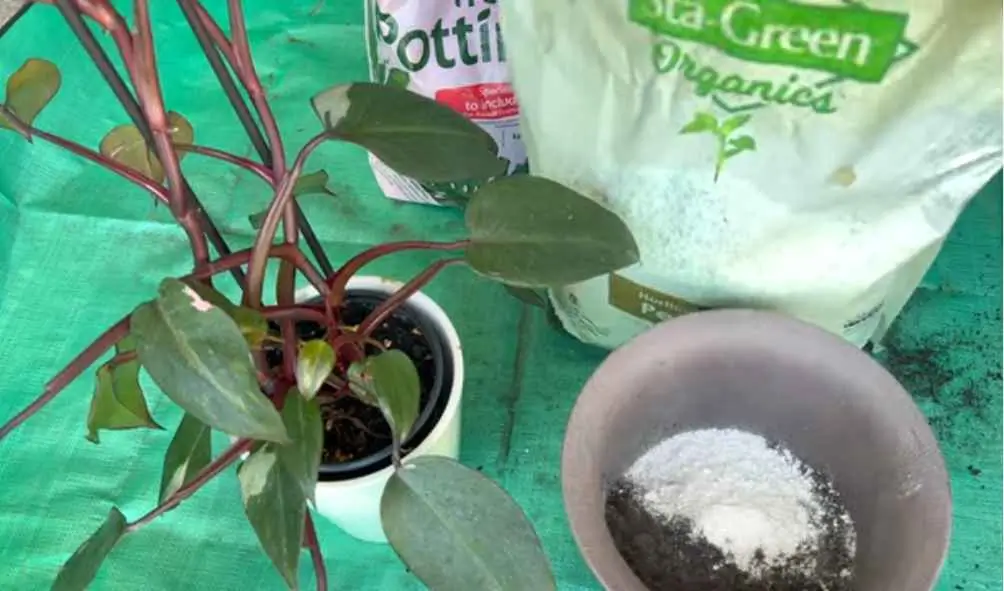
DIY Soil Mix Recipes
- Basic Mix: Mix equal parts of potting soil, perlite, and orchid bark. This mix drains well but keeps some moisture.
- Enhanced Mix: Add some charcoal to the basic mix. Charcoal helps with drainage and keeps the soil fresh by soaking up extra water and stopping fungus.
- Moisture-Retentive Mix: For dry areas, mix potting soil, perlite, and coco coir or peat moss. Coco coir or peat moss holds moisture, and perlite ensures good drainage.
Why Well-Draining Soil Matters?
Well-draining soil stops root rot and other problems from too much water. Pink Princess Philodendron likes soil that lets water flow through quickly so the roots don’t stay wet. Check the drainage holes in your pot often to make sure they are not blocked and the soil drains well.
Temperature and Humidity Needs
Pink Princess Philodendron loves warm and humid environments, similar to its natural habitat. These conditions are essential for healthy growth and keeping its vibrant variegation.
Optimal Temperature Range
The best temperature range for a Pink Princess Philodendron is between 65-80°F (18-27°C). Avoid temperatures below 55°F (13°C) to prevent cold damage. Also, keep it away from sudden temperature changes and drafts from air conditioners or heaters.
Humidity Requirements
Humidity levels should be around 65-80% for optimal growth. High humidity prevents the edges of the leaves from browning and keeps the plant looking lush and healthy.
Tips to Maintain Proper Humidity Levels
- Use a Humidifier: This can help maintain consistent humidity levels, especially during dry winter months.
- Pebble Tray: Place a tray filled with pebbles and water under the plant. As the water evaporates, it increases the humidity around the plant.
- Group Plants Together: Grouping plants can create a microenvironment with higher humidity due to the collective transpiration of the plants.
- Regular Misting: Lightly mist the leaves regularly, but ensure they dry quickly to prevent fungal issues.
Fertilizing Pink Princess Philodendron
Fertilizing your Pink Princess Philodendron helps keep its vibrant variegation and promotes healthy growth. Regular feeding during the growing season can make a significant difference in the plant’s health and appearance.
Recommended Fertilizers and Feeding Schedule
- Use a balanced, water-soluble fertilizer with an N-P-K ratio of 10-10-10 or 20-20-20. Dilute the fertilizer to half the recommended strength and apply it every 4-6 weeks during the growing season (spring and summer).
- Avoid over-fertilizing as this can lead to salt build-up in the soil and damage the roots.
- During the fall and winter, reduce the frequency of fertilization, as the plant’s growth slows down. It’s best to halt fertilizing entirely in the winter to prevent stimulating new growth that could be susceptible to the cooler temperatures and lower light levels.
Dos and Don’ts of Fertilizing
- Do: Use a balanced fertilizer to ensure the plant gets all essential nutrients.
- Don’t: Over-fertilize, as this can harm the plant.
- Do: Fertilize during the growing season for the best results.
- Don’t: Fertilize dry soil. Always water the plant before applying fertilizer to prevent root burn.
Maintaining a consistent fertilization routine will help your Pink Princess Philodendron thrive, displaying vibrant variegation and robust growth.
Propagation Methods for Pink Princess Philodendron
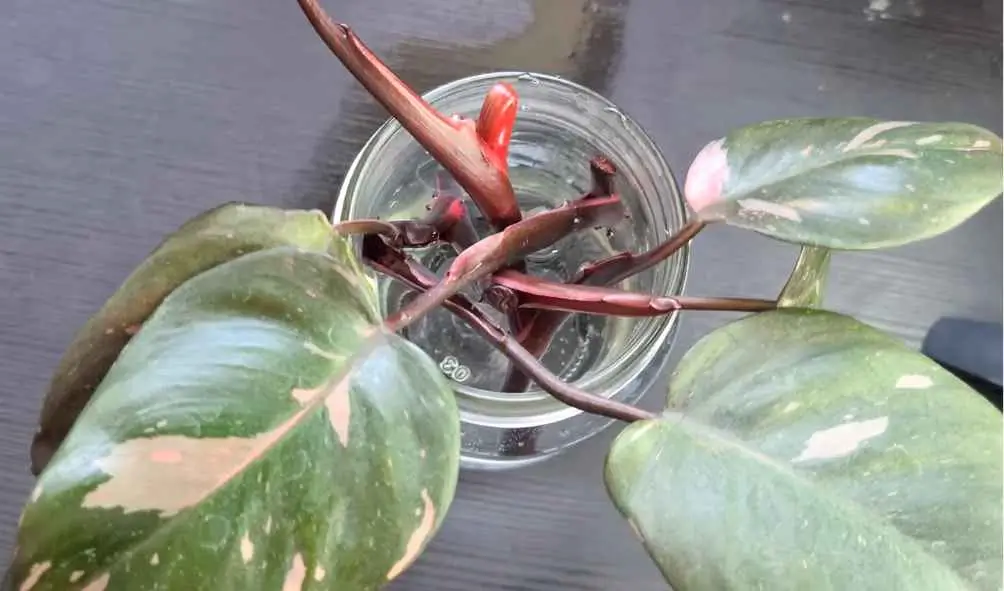
How to Propagate Pink Princess Philodendron from Stem Cuttings?
Propagating your Pink Princess Philodendron through stem cuttings is a popular and easy way to create new plants. This method helps ensure that the beautiful pink and green patterns are passed on to the new plants.
Step-by-Step Guide for Propagating Through Stem Cuttings
- Choose a Healthy Stem: Select a healthy stem with at least 2-3 leaves and 2-3 nodes. Nodes are crucial as they are where new roots will grow.
- Prepare Your Tools: Use sterilized scissors or pruning shears to prevent spreading diseases. Clean your tools with rubbing alcohol or a bleach solution.
- Make the Cut: Cut the stem just below a node. Make sure the cut is clean and straight.
- Prepare the Cutting: Remove the lower leaves, leaving only 1-2 leaves at the top. This helps the plant focus on growing roots instead of supporting too many leaves.
- Rooting Medium: Place the cutting in water or a well-draining soil mix. Both methods work, but water propagation allows you to see the roots as they develop.
- Provide the Right Environment: Keep the cutting in a warm, bright spot with indirect light. Avoid direct sunlight, which can stress the cutting. Maintain high humidity by covering the cutting with a plastic bag or using a propagator.
- Wait for Roots: Roots should start to grow in 2-4 weeks. Once they are 1-2 inches long, transplant the cutting into soil. If you are propagating in soil, gently tug on the cutting after a few weeks to check for resistance, indicating root growth.
Common Issues and How to Avoid Them
- Rotting: Ensure the water or soil is clean and not overly wet. Change the water regularly if you are using water propagation.
- Lack of Root Development: This can be due to low humidity or insufficient light. Make sure the cutting is in a humid environment and gets bright, indirect light.
- Leaf Droop: This means the cutting is losing too much moisture. Remove excess leaves and make sure the remaining leaves aren’t touching the water or soil directly.
Air Layering Pink Princess Philodendron
Air layering is another method to propagate your plant. It involves creating a small wound on a stem and encouraging roots to grow from that point. This method is great for larger plants or if you want a higher success rate.
Detailed Tutorial on Air Layering
- Choose a Stem: Select a healthy stem with at least one node. The stem should be mature but flexible.
- Make a Cut: Make a small, 1-inch cut halfway through the stem just below a node. Be careful not to cut all the way through.
- Apply Rooting Hormone: Apply rooting hormone to the cut area to stimulate root growth. This step can significantly increase success.
- Wrap with Moss: Wrap damp sphagnum moss around the cut. The moss should be moist but not soaking wet.
- Cover with Plastic Wrap: Cover the moss with plastic wrap to retain moisture. Secure it with twist ties or string at both ends.
- Maintain Moisture: Check the moss regularly to ensure it stays moist. Re-moisten it if necessary.
- Wait for Roots: Roots should develop in a few weeks. Once you see substantial root growth through the moss, cut below the wrapped area and plant the new section in soil.
Benefits of Air Layering
- Higher Success Rate: Air layering often has a higher success rate compared to other methods since the parent plant supports the cutting until it has roots.
- Larger New Plants: This method allows you to propagate larger sections, resulting in more mature new plants.
Choosing the Right Propagation Method
The method you choose for propagating your Pink Princess Philodendron depends on your resources, experience, and goals. Stem cuttings are great for beginners and small-scale propagation, while air layering offers a higher success rate for larger plants. By understanding and using these methods, you can expand your collection and share the beauty of this unique plant with others.
Common Problems and Solutions for Pink Princess Philodendron
The Pink Princess Philodendron is a tough plant, but it can still run into issues with pests and diseases. Spotting and fixing these problems early will keep your plant looking its best.
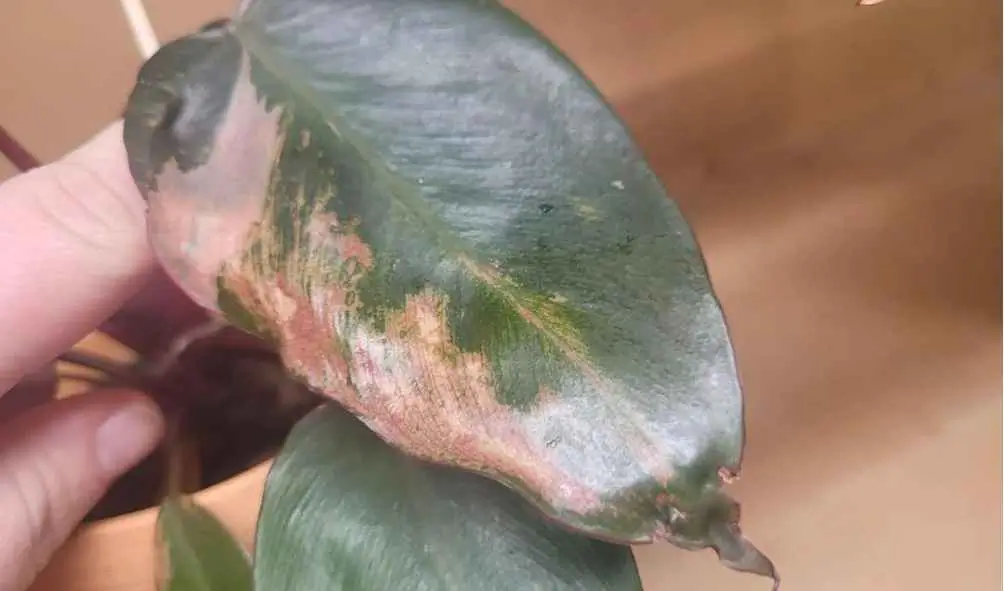
Common Pests
Spider Mites
These tiny pests suck the sap from your plant, causing small, dotted damage and webbing on the leaves. To get rid of spider mites, separate the affected plant and spray it with a mix of water and neem oil. Check and clean the leaves regularly to avoid another infestation.
Aphids
Aphids also feed on the plant’s sap, causing leaves to curl and become misshapen. They leave behind a sticky substance called honeydew, which can lead to mold. Use insecticidal soap or neem oil to treat aphids. If the problem is severe, you might need to trim the affected areas.
Mealybugs
These look like small, white, cottony spots on the leaves and stems. They weaken the plant by sucking its sap. Remove mealybugs with a cotton swab dipped in rubbing alcohol, and follow up with insecticidal soap.
Thrips
These slender insects cause silvery streaks on the leaves. Use blue sticky traps to catch adult thrips and apply insecticidal soap or neem oil to kill the larvae.
Common Diseases
Root Rot
Overwatering or poorly draining soil can cause root rot, which shows up as yellowing leaves and a bad smell from the soil. To fix it, take the plant out of its pot, trim the affected roots, and repot it in fresh, well-draining soil.
Leaf Spot
This fungal infection causes dark, water-soaked spots on the leaves. Remove the affected leaves and treat the plant with a fungicide. Make sure there’s good air circulation and avoid watering from above.
Powdery Mildew
This appears as a white, powdery substance on the leaves. Increase air circulation, reduce humidity, and apply a fungicide to treat it.
Leaf Issues
Yellowing Leaves
Yellow leaves can be caused by:
- Overwatering: Let the soil dry out a bit between waterings and make sure the pot drains well.
- Nutrient Deficiency: Regular fertilization during the growing season can help.
- Poor Light Conditions: Move your plant to a brighter spot with indirect light.
Browning Leaves
Brown tips or edges can mean:
- Low Humidity: The plant likes high humidity. Mist it, use a humidifier, or place a pebble tray nearby.
- Underwatering: Water your plant when the top 2 inches of soil are dry.
- Exposure to Drafts: Keep it away from cold drafts or heaters.
Curling Leaves
Leaves might curl due to:
- Too Much Light: Move the plant to a spot with bright, indirect light.
- Temperature Stress: Keep the temperature between 65-80°F (18-27°C).
- Chemical Exposure: Use filtered or distilled water if your tap water has high chlorine or fluoride levels.
READ MORE: Pink Princess Leaf Drop: Causes, Solutions, and How to Keep Your Plant Thriving
Losing Variegation
The pink color in Pink Princess Philodendron is due to a genetic mutation that needs enough light to thrive.
Causes of Variegation Loss:
- Inadequate Light: The plant may produce more green leaves in low light to photosynthesize better. Ensure it gets bright, indirect light for at least 6 hours a day.
- Age of the Plant: Older plants might naturally produce less variegation. Regular pruning can help new variegated growth.
- Nutrient Imbalance: Ensure your plant is getting the right nutrients with a balanced fertilizer.
Tips to Encourage More Pink Variegation:
- Increase Light Exposure: Make sure your plant gets enough bright, indirect light. Use grow lights if needed.
- Prune Regularly: Trim stems with less variegation to encourage new growth with more pink.
- Balanced Fertilization: Use a balanced, water-soluble fertilizer during the growing season.
- Rotate the Plant: Turn the plant periodically so all sides get even light exposure.
By keeping an eye out for these common problems and taking the right steps, you can keep your Pink Princess Philodendron healthy and looking great. Regular care and monitoring are key to maintaining its beauty and helping it thrive in your home.
Advanced Care Tips
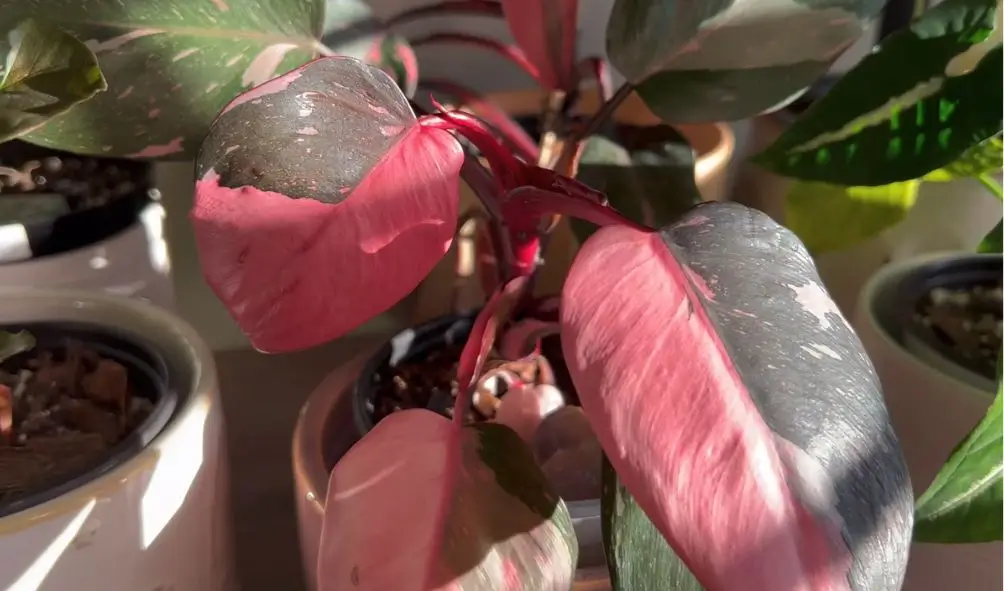
How to Train Your Pink Princess Philodendron to Climb?
The Pink Princess Philodendron loves to climb. Training it to do so not only makes it look even more stunning but also helps it grow better.
Choosing the Right Support Structure
Moss Poles
Moss poles are great because they give the plant’s aerial roots something to hold onto. They also stay moist, which the plant loves.
Trellises
Trellises offer a more organized look and are perfect for bigger spaces. They let the plant spread out and show off its beautiful leaves.
Cedar Planks
Cedar planks are another natural option that look nice with indoor decor. They last a long time and don’t rot easily.
Training Steps
- Install the Support
Put the support structure in the pot when you plant or repot your Pink Princess. Make sure it’s stable and can handle the plant as it grows. - Tie the Stems
Use soft plant ties, garden twine, or even Velcro strips to gently tie the stems to the support. Don’t tie them too tight; you don’t want to hurt the stems. - Encourage Root Attachment
Mist the moss pole or cedar plank to help the aerial roots attach. This helps the plant climb naturally. - Regular Adjustments
As the plant grows, keep tying new growth to the support. Adjust the ties as needed to help shape the plant and support its growth.
Benefits of Climbing
- Improved Air Circulation
Climbing helps air move around the leaves, which cuts down on the chances of fungal infections and pests. - Better Light Exposure
Training the plant to climb ensures it gets even light exposure, which helps it grow uniformly and enhances its variegation. - Space Efficiency
Vertical growth saves space, allowing you to grow more plants in a small area.
By giving your Pink Princess Philodendron the right support and training it to climb, you’ll help it stay healthy and look amazing.
Seasonal Care
Adjusting your care routine according to the seasons is crucial for the health of your Pink Princess Philodendron. Different seasons bring changes in light, temperature, and humidity, all of which can affect your plant’s growth.
Spring and Summer
- Increased Watering: As the plant enters its active growing season, it will require more frequent watering. Ensure the soil remains consistently moist but not waterlogged.
- Regular Fertilization: Feed the plant every 4-6 weeks with a balanced, water-soluble fertilizer to support vigorous growth.
- Pruning: Spring is an excellent time to prune the plant to encourage new growth and maintain its shape. Remove any leggy or unhealthy stems.
- Pest Inspection: Warmer temperatures can bring about pests. Regularly inspect the plant for signs of infestations and treat promptly.
Fall and Winter
- Reduced Watering: As growth slows down, reduce the frequency of watering. Allow the top 2-3 inches of soil to dry out before watering again.
- Minimal Fertilization: Stop fertilizing the plant in late fall and winter. Excess nutrients can lead to salt build-up and damage the roots.
- Temperature Monitoring: Keep the plant away from cold drafts and heating vents. Maintain a stable indoor temperature to avoid stress.
- Light Adjustment: With shorter days and less natural light, consider supplementing with grow lights to ensure the plant receives adequate light.
Pruning Techniques
Pruning your Pink Princess Philodendron is essential for maintaining its health and appearance. Proper pruning encourages bushier growth and helps manage the plant’s size.
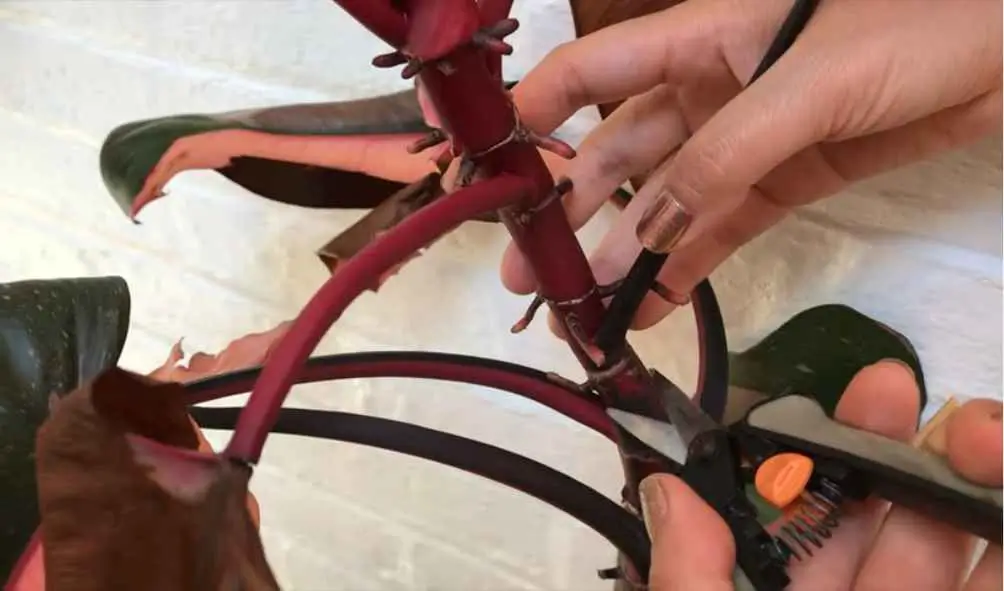
When to Prune
- Spring and Early Summer: The best time to prune is during the active growing season. This allows the plant to recover quickly and produce new growth.
- As Needed: You can prune dead or damaged leaves at any time to maintain the plant’s health.
How to Prune
- Sterilize Tools: Use sterilized scissors or pruning shears to prevent the spread of diseases.
- Identify Growth Points: Look for nodes, which are points on the stem where leaves and roots grow. Pruning just above a node encourages new branches to form.
- Cut at an Angle: Make clean cuts at a 45-degree angle to minimize damage and promote healing.
- Remove Leggy Growth: Cut back any long, leggy stems to encourage bushier growth. Focus on stems that have fewer leaves or appear weak.
- Shape the Plant: Prune to shape the plant and control its size. Remove any stems that detract from the plant’s overall appearance.
Repotting Tips
Repotting your Pink Princess Philodendron every 1-2 years is essential for its growth and health. Repotting provides fresh soil, more space for roots, and an opportunity to check root health.
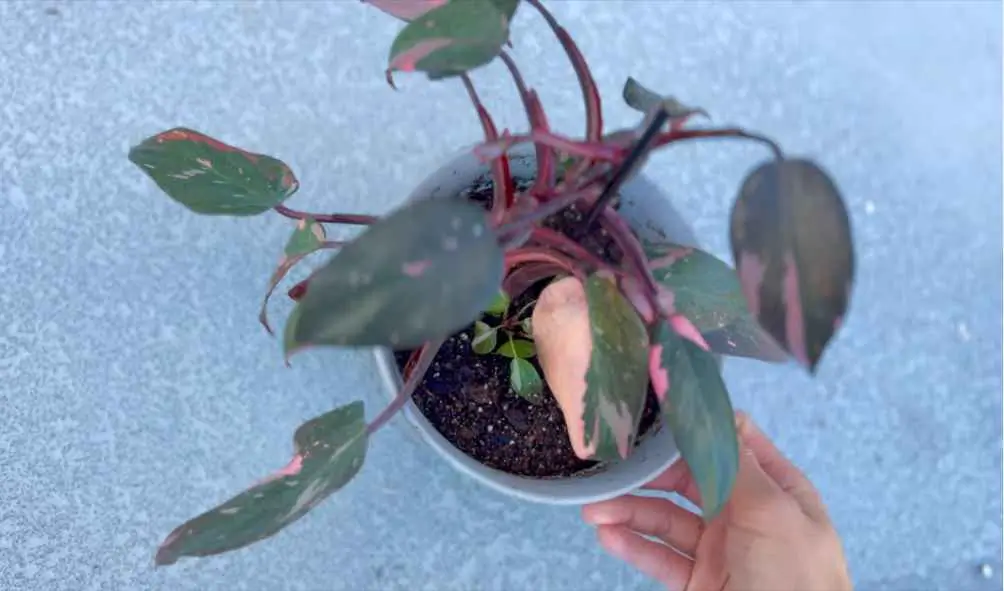
When to Repot
- Root Bound: If the roots are growing out of the drainage holes or circling the pot, it’s time to repot.
- Growth Slowdown: If the plant’s growth has slowed significantly, it may need more space and nutrients.
How to Repot
- Choose the Right Pot: Select a pot that is 1-2 inches larger in diameter than the current one. Ensure it has good drainage.
- Prepare the Soil: Use a well-draining soil mix suitable for aroids. A mix of potting soil, perlite, and orchid bark works well.
- Remove the Plant: Gently remove the plant from its current pot. Be careful not to damage the roots.
- Check the Roots: Trim any dead or rotten roots. Healthy roots should be white and firm.
- Plant in New Pot: Place the plant in the new pot, filling in with fresh soil. Ensure the plant is at the same depth as before.
- Water Thoroughly: Water the plant thoroughly after repotting, allowing excess water to drain out.
By following these advanced care tips, you can ensure your Pink Princess Philodendron remains healthy, vibrant, and a stunning addition to your indoor plant collection. Regular monitoring, proper pruning, and adjusting care routines according to the seasons are key to successful long-term growth.
Buying and Collecting Pink Princess Philodendron
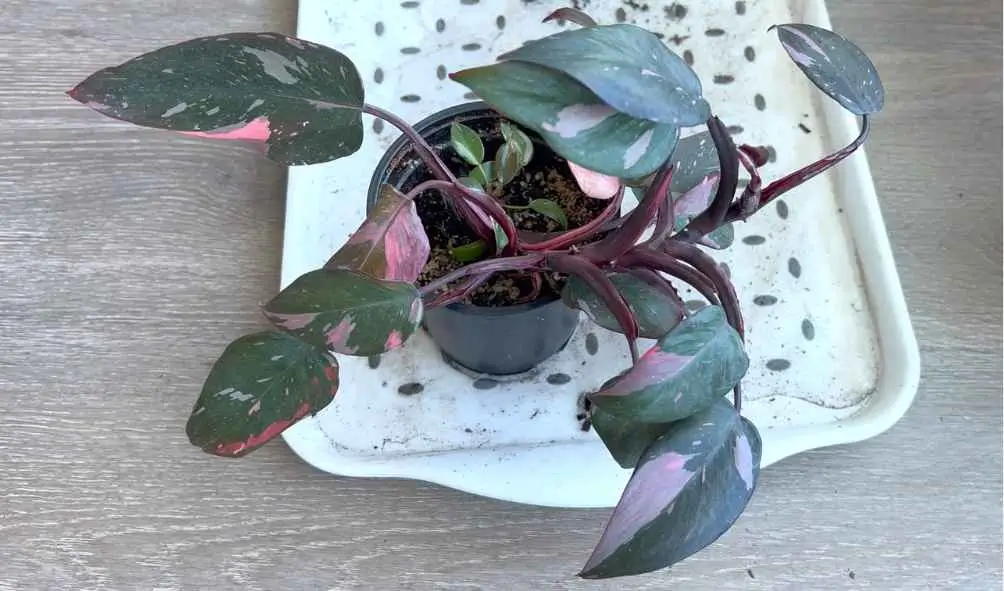
Where to Buy Pink Princess Philodendron
The Pink Princess Philodendron has become a coveted plant among collectors and enthusiasts, making it a bit of a challenge to find. However, with the right resources and tips, you can locate genuine Pink Princess Philodendron plants from reliable sources.
Reputable Online Nurseries
Online nurseries are often the best places to find rare plants like the Pink Princess Philodendron. Here are some reputable online sources:
- Etsy: Many sellers on Etsy specialize in rare houseplants, including the Pink Princess Philodendron. Always check the seller’s reviews and ratings before purchasing.
- Logee’s Plants for Home & Garden: This online nursery is known for its wide variety of houseplants and has been a trusted source for years.
- Gabriella Plants: Known for their quality and customer service, Gabriella Plants often carries the Pink Princess Philodendron.
When buying online, always ask for recent photos of the plant you’re purchasing to ensure you’re getting a healthy and well-variegated specimen. Verify the seller’s return policy and shipping conditions to avoid any unpleasant surprises.
Local Plant Shops and Nurseries
Local nurseries and plant shops can sometimes carry the Pink Princess Philodendron. Visiting these places allows you to inspect the plant in person and ensure it’s healthy. Here are a few tips for finding local sources:
- Specialized Nurseries: Nurseries that specialize in tropical or rare plants are more likely to carry the Pink Princess Philodendron.
- Plant Shows and Sales: Attend local plant shows, sales, or fairs where specialty nurseries and collectors sell their plants. These events can be great opportunities to find rare plants.
- Networking: Join local plant enthusiast groups or gardening clubs. Networking with other plant lovers can lead you to local sources and even trade opportunities.
Online Marketplaces and Plant Communities
Apart from nurseries, online marketplaces and plant communities are excellent resources for buying and learning more about the Pink Princess Philodendron.
- Facebook Groups: There are numerous plant buy, sell, and trade groups on Facebook. Look for groups specializing in rare and variegated plants.
- Reddit: Subreddits like r/IndoorGarden and r/rareplants can be useful for finding sellers and getting advice from other collectors.
- PlantSwap: This app allows plant enthusiasts to swap plants and cuttings locally, providing a way to obtain rare plants like the Pink Princess Philodendron without purchasing them outright.
When using online marketplaces or community groups, always prioritize safety and verify the credibility of the seller. If possible, use secure payment methods that offer buyer protection.
Pink Princess Philodendron Price Guide
The cost of a Pink Princess Philodendron can vary widely depending on the plant’s size, variegation quality, and the seller’s reputation. Here’s a breakdown of what you can expect to pay:
Small Plants and Cuttings
- Small Plants (4-6 inches): These typically cost between $50 to $150. The price can be higher if the plant has a high level of variegation.
- Cuttings: Unrooted cuttings can be found for $30 to $100, depending on the number of nodes and the variegation.
Medium to Large Plants
- Medium Plants (6-12 inches): Prices range from $150 to $300. Plants in this size range often come with well-established root systems.
- Large Plants (12 inches and above): These can cost anywhere from $300 to $500 or more, especially if the plant has mature, highly variegated leaves.
Rare Varieties and High-Variegation Specimens
- High Variegation Specimens: Plants with a high degree of pink variegation are more expensive, often starting at $200 and going up to $1000 or more for particularly striking specimens.
- Rare Varieties: Some rare varieties of the Pink Princess Philodendron, such as those with unusual leaf shapes or colors, can fetch even higher prices.
When considering the cost, keep in mind that investing in a healthy, well-variegated plant can be worth the higher price for long-term satisfaction and growth potential.
Rare Pink Princess Philodendron Varieties
The Pink Princess Philodendron is already a rare and unique plant, but there are some varieties that are even more coveted by collectors.
Philodendron Pink Congo
The Philodendron Pink Congo is known for its consistent pink leaves. However, it’s important to note that some Pink Congo plants have been chemically treated to enhance their pink color, which can fade over time. Ensure you’re purchasing from a reputable seller who can verify the plant’s authenticity.
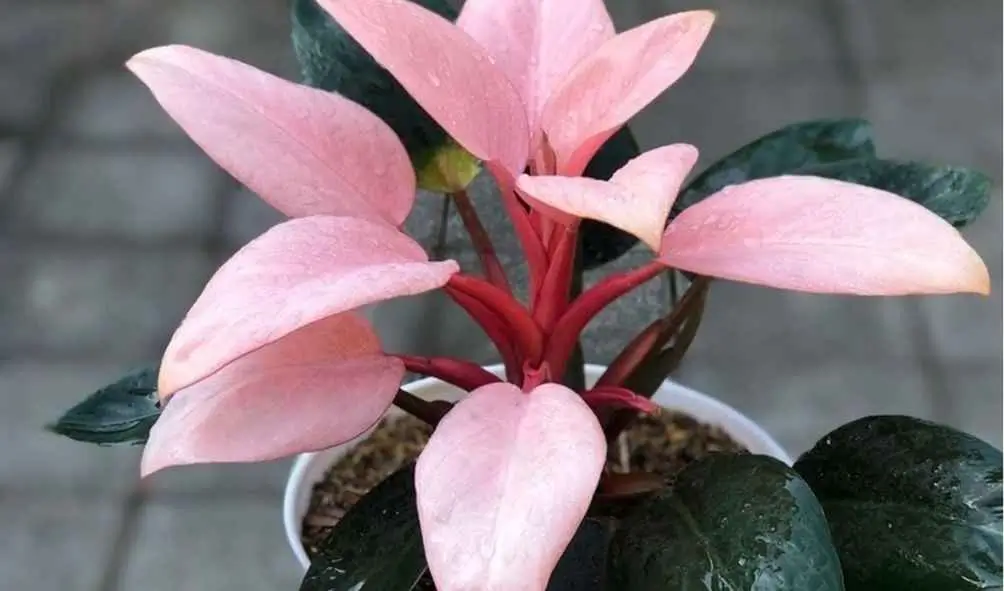
Philodendron White Princess
This variety features both pink and white variegation, making it even more striking. The Philodendron White Princess is highly sought after and can be quite expensive.
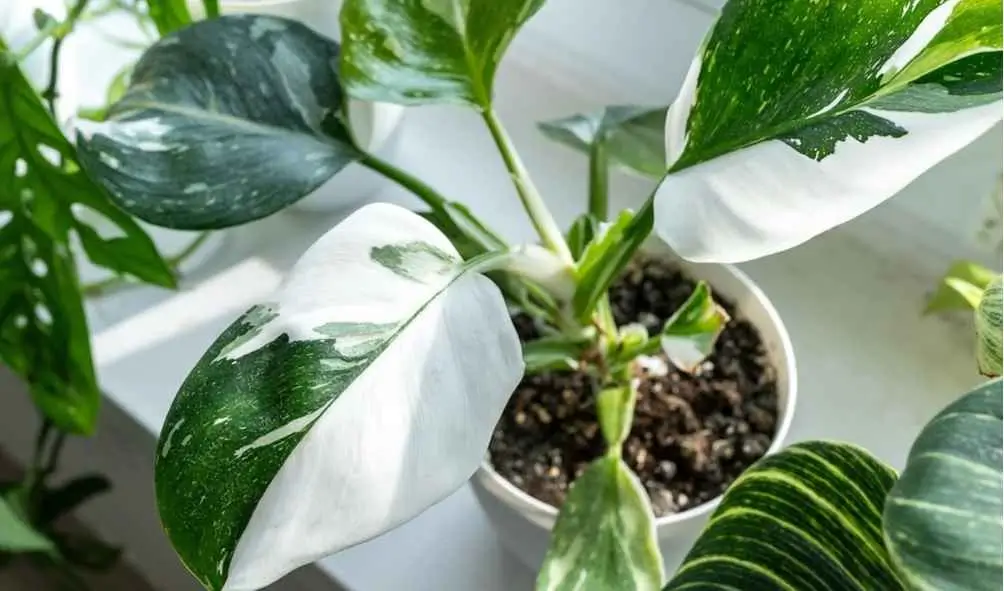
Collecting Tips for Enthusiasts
- Verify Authenticity: Always verify the authenticity of rare varieties to avoid scams. Ask for documentation or proof of the plant’s lineage if possible.
- Network with Collectors: Networking with other collectors can provide valuable insights and opportunities to acquire rare plants.
- Stay Informed: Follow trends and updates in the plant community to stay informed about new varieties and availability.
Is Buying a Pink Princess Philodendron Worth It?
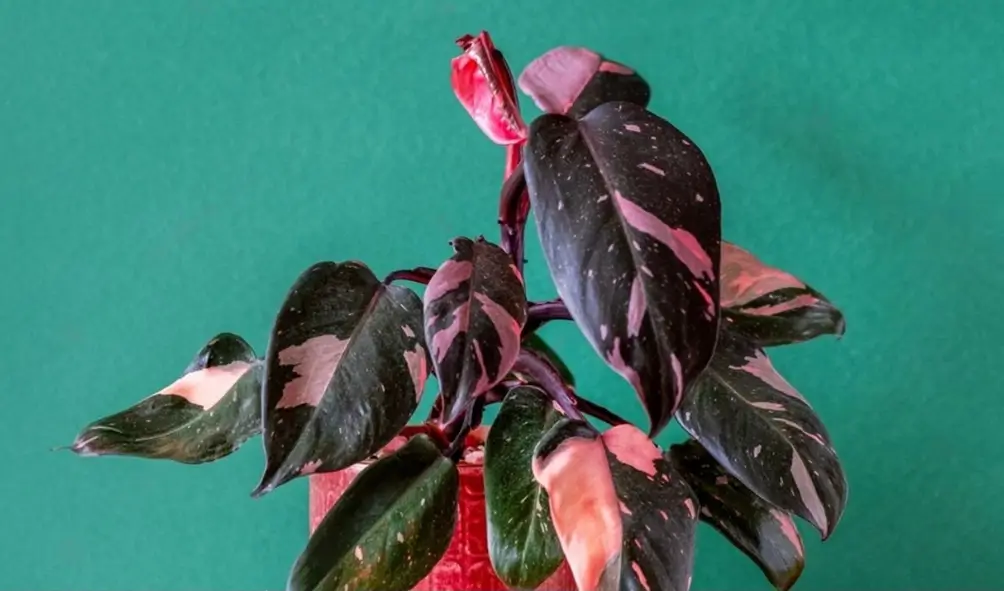
Investing in a Pink Princess Philodendron can be worth it for several reasons:
- Aesthetic Appeal: The plant’s striking appearance adds a unique touch to any indoor garden.
- Rarity: Owning a rare plant can be rewarding and adds value to your collection.
- Propagation Potential: With proper care, you can propagate new plants from cuttings, potentially expanding your collection or sharing with others.
However, it’s important to consider the cost and care requirements. The Pink Princess Philodendron can be high-maintenance and requires specific conditions to thrive. Ensure you’re prepared for the commitment before purchasing.
Community and Culture
Pink Princess Philodendron Communities Online
Engaging with online communities can greatly enhance your experience as a Pink Princess Philodendron owner. These communities provide a wealth of knowledge, support, and camaraderie among plant enthusiasts. Here’s how you can get involved:
Popular Online Communities
- Reddit: Subreddits like r/houseplants, r/IndoorGarden, and r/rareplants are excellent resources for sharing experiences, asking questions, and connecting with other plant lovers. These forums are active and filled with helpful advice from both novice and experienced growers.
- Instagram: Instagram is a visual paradise for plant enthusiasts. By following hashtags like #pinkprincessphilodendron, #variegatedplants, and #houseplantcommunity, you can discover stunning plant photos, care tips, and connect with other enthusiasts. Many plant influencers share their experiences and provide valuable insights into plant care.
- Plant Forums: Websites like GardenWeb and Dave’s Garden have dedicated forums where members discuss plant care, share photos, and offer advice. These forums are treasure troves of information, especially for rare plant collectors.
Benefits of Joining Plant Communities
- Access to Expertise: Online communities are filled with experienced growers who can offer personalized advice and troubleshoot problems.
- Resource Sharing: Members often share resources such as care guides, propagation tips, and trusted sellers.
- Networking Opportunities: Connect with other enthusiasts for plant swaps, trades, and even local meetups.
- Inspiration and Motivation: Seeing the successes and creativity of others can inspire and motivate you to try new things with your own plants.
How to Participate
- Ask Questions: Don’t hesitate to ask questions, whether you’re dealing with a specific issue or seeking general advice. Most community members are happy to help.
- Share Your Experience: Post photos and updates of your Pink Princess Philodendron. Sharing your successes and challenges can provide valuable insights for others.
- Engage Respectfully: Respect community guidelines and engage respectfully with other members. Constructive criticism and polite discussions help build a positive environment.
- Contribute Knowledge: If you have expertise or unique experiences, share your knowledge. Providing helpful advice and tips can enrich the community.
Ethical Considerations in Collecting Rare Plants
As more people start liking rare plants like the Pink Princess Philodendron, it’s important to think about how we collect these plants. We want to enjoy these plants without hurting nature or supporting bad practices.
First, buy plants from sellers you can trust. Make sure they get their plants in a way that doesn’t harm the environment. Don’t buy from sellers who take plants from the wild without permission or can’t say where their plants come from. It’s better to buy plants that are grown in nurseries. Taking plants from the wild can destroy natural areas and harm the plants that live there.
You can also help by supporting efforts to protect nature. Give money to or join groups that save natural places and rare plants. You can also help by joining projects that track plant populations and share this information with groups working to protect plants.
It’s also important to tell others about why we should collect plants in a careful way. Let them know about the problems with taking plants from the wild without care. Support rules that protect rare plants and their homes, and push for stronger enforcement of these rules to stop illegal trade.
Conclusion
Taking care of a Pink Princess Philodendron is fun and easy. This plant has bright pink and green leaves, which make it special in any room. By learning how to care for it, you can help your plant grow strong.
Put your plant in a place with bright, indirect light. Keep the air around it moist, and use soil that drains well. Water it right, feed it often, and trim it sometimes to keep its colors bright.
If you want more plants, you can grow new ones from your Pink Princess Philodendron. You can do this by cutting a piece of the stem or using air layering. This helps you grow your collection or share with friends. Joining online plant groups is also fun. You can share tips, ask for help, and meet other plant lovers.
Think about where you get your plants. Try to buy from places that care about the environment and protect these special plants. By following these tips, you can enjoy your Pink Princess Philodendron and help keep plants safe.
FAQ
What is a Pink Princess Philodendron?
The Pink Princess Philodendron is a rare and popular houseplant. It is known for its pink and green leaves. This plant comes from the tropical rainforests of South America. It is loved for its special look and is easy to care for.
How often should I water my Pink Princess Philodendron?
Water your Pink Princess Philodendron when the top 2 inches of soil are dry. This is usually about once a week but may change with the humidity and temperature in your home. Make sure the pot has good drainage to stop water from sitting in the soil, which can cause root rot.
What type of soil is best for Pink Princess Philodendron?
Using the right soil mix is important for your Pink Princess Philodendron. A good mix includes potting soil, perlite, and orchid bark. This mix helps air reach the roots and stops the soil from getting too tight, which can slow down root growth and water uptake.
Why is my Pink Princess Philodendron losing its pink variegation?
Loss of color often happens because of low light. Make sure your plant gets bright, indirect light for at least 6 hours each day. If natural light isn’t enough, think about using grow lights. Cutting back stems with less pink can also help new growth show more color.
How can I propagate my Pink Princess Philodendron?
You can grow more Pink Princess Philodendrons by using stem cuttings, air layering, or tissue culture. For stem cuttings, pick a healthy stem with 2-3 nodes. Cut just below a node and place the cutting in water or well-draining soil. Roots should start to grow in a few weeks.
What are common pests and how do I treat them?
Common pests are spider mites, aphids, and mealybugs. If you find pests, move the plant away from others. Use insecticidal soap or neem oil to treat it. Check your plant often for pests and keep air flowing well to stop infestations.
Is the Pink Princess Philodendron toxic to pets?
Yes, the Pink Princess Philodendron is toxic to pets and humans if ingested. It contains calcium oxalate crystals, which can cause irritation and swelling in the mouth and throat. Keep this plant out of reach of children and pets to prevent accidental ingestion.
Where can I buy a genuine Pink Princess Philodendron?
Genuine Pink Princess Philodendron plants can be purchased from reputable online nurseries, specialized plant shops, and plant enthusiasts’ communities. Websites like Etsy often have listings, but always check reviews and ask for recent photos to ensure you’re getting a healthy plant.
How do I increase the humidity for my Pink Princess Philodendron?
To increase humidity, you can use a humidifier, place a tray of water near the plant, or mist the leaves regularly. Grouping plants together can also help create a more humid microenvironment. Aim for humidity levels between 65-80% for optimal growth.
How often should I repot my Pink Princess Philodendron?
Repot your Pink Princess Philodendron every 1-2 years, or when you notice the roots are becoming pot-bound. Choose a pot that is 1-2 inches larger in diameter than the current one. Repotting in the spring or summer is ideal, as the plant is actively growing during these seasons.
Related
Discover more from Pink Philodendron
Subscribe to get the latest posts sent to your email.


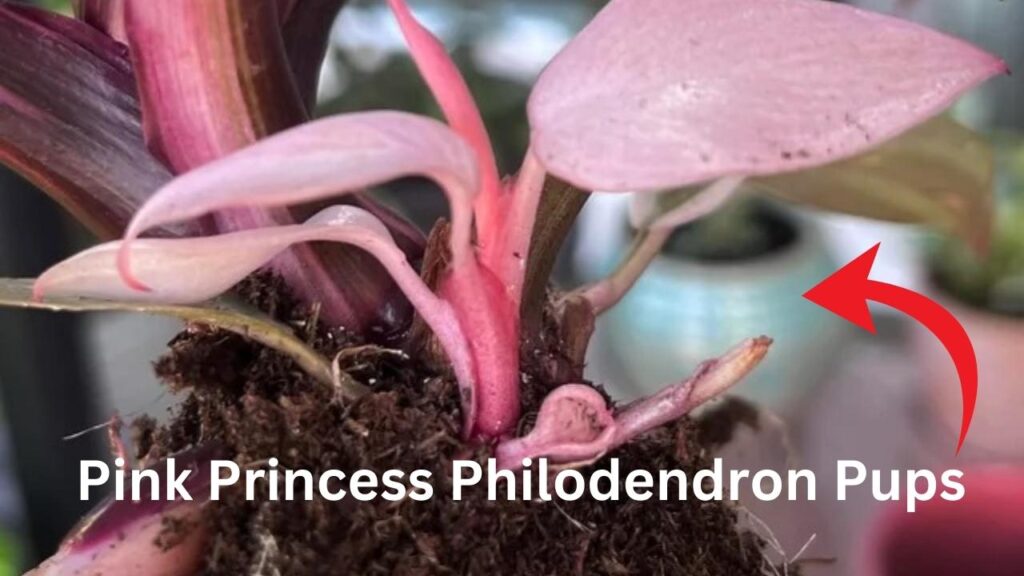







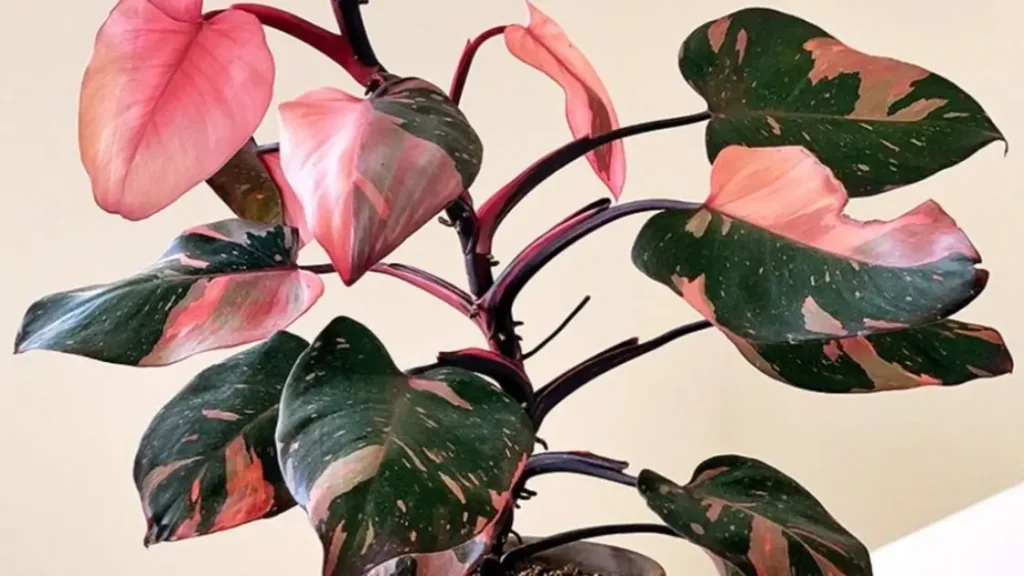

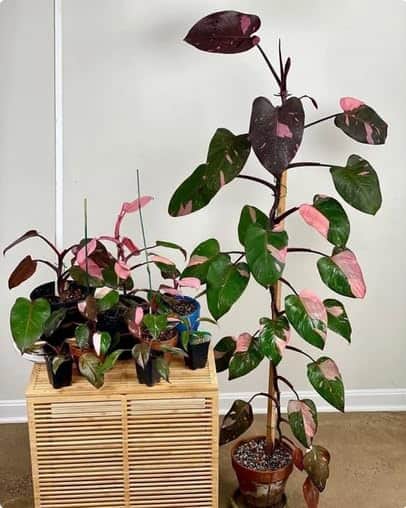
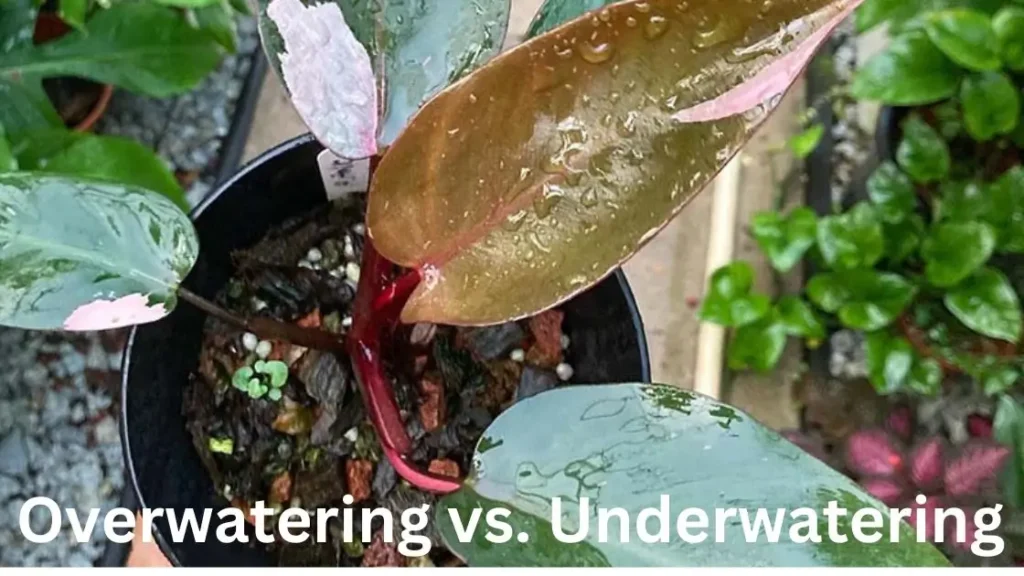
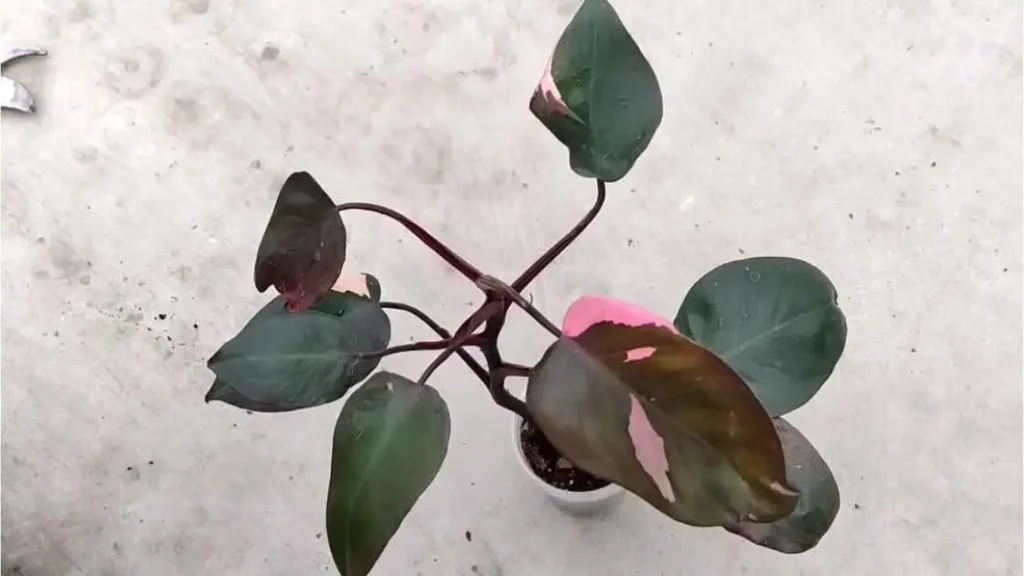


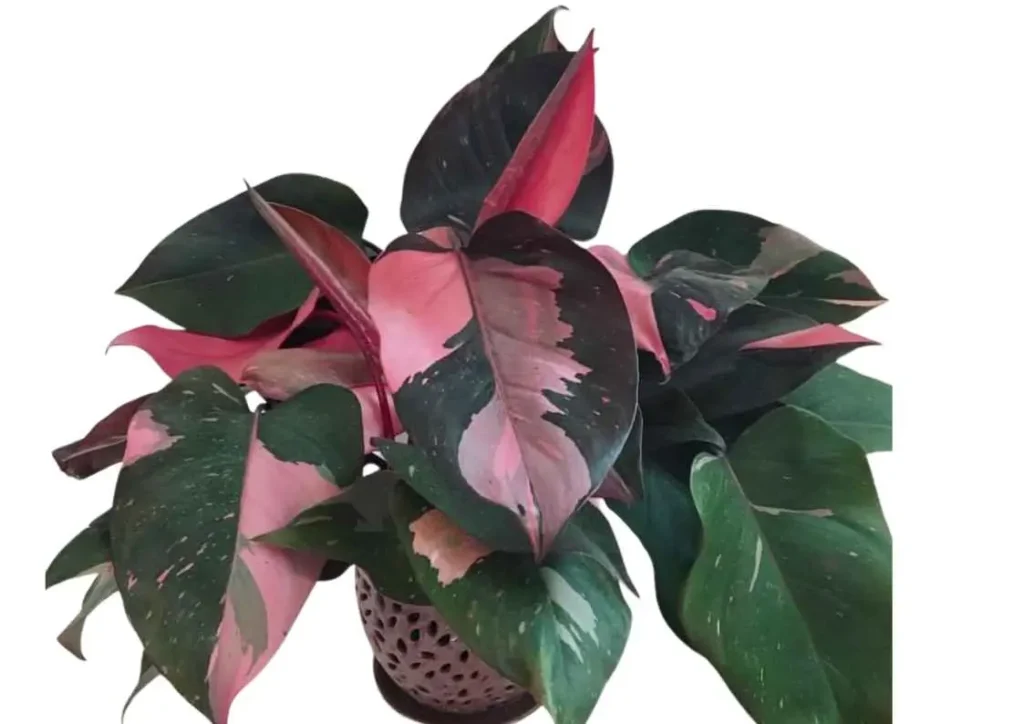







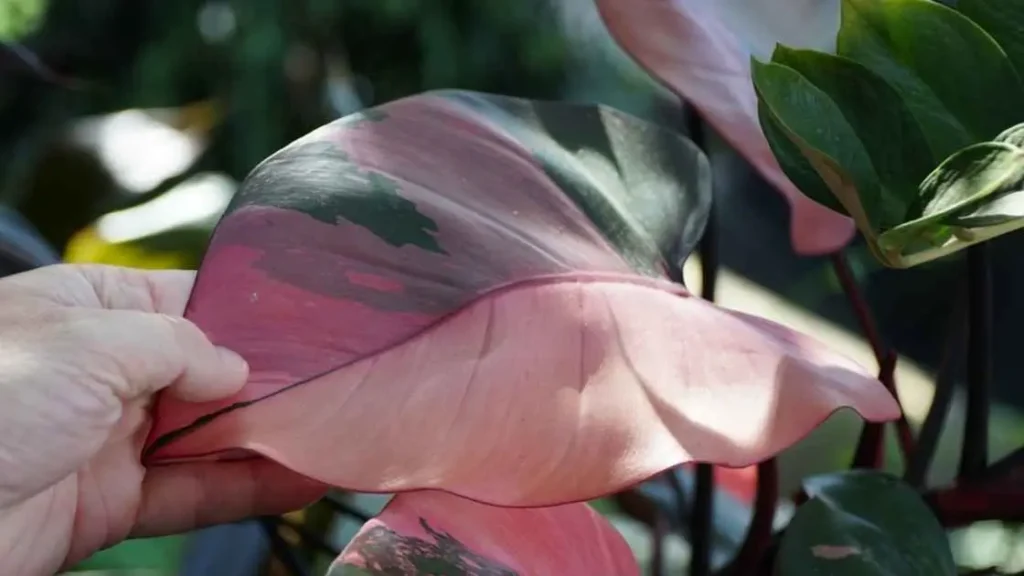






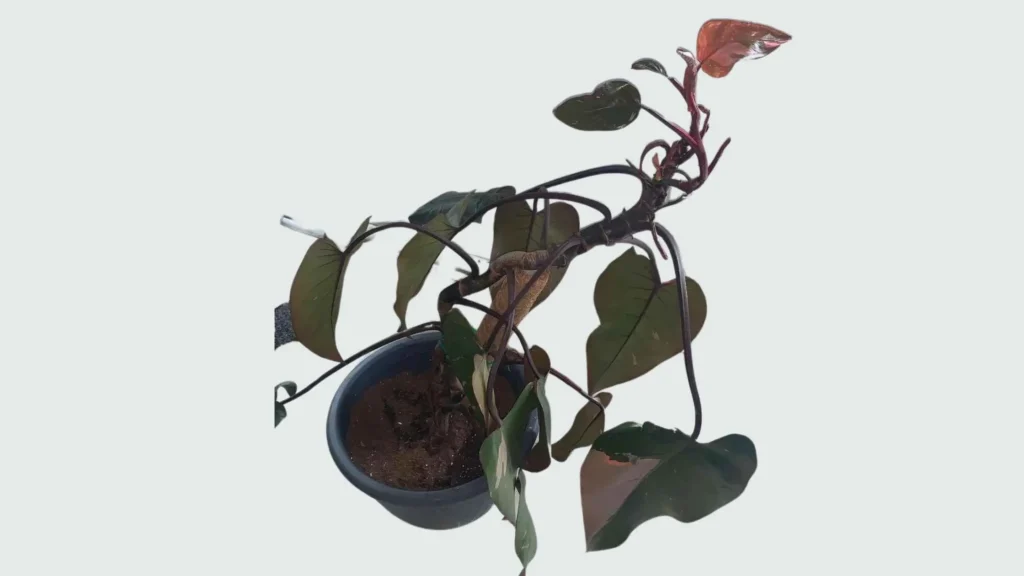








1 thought on “Pink Princess Philodendron | Ultimate Care, Propagation, and Buying Guide”